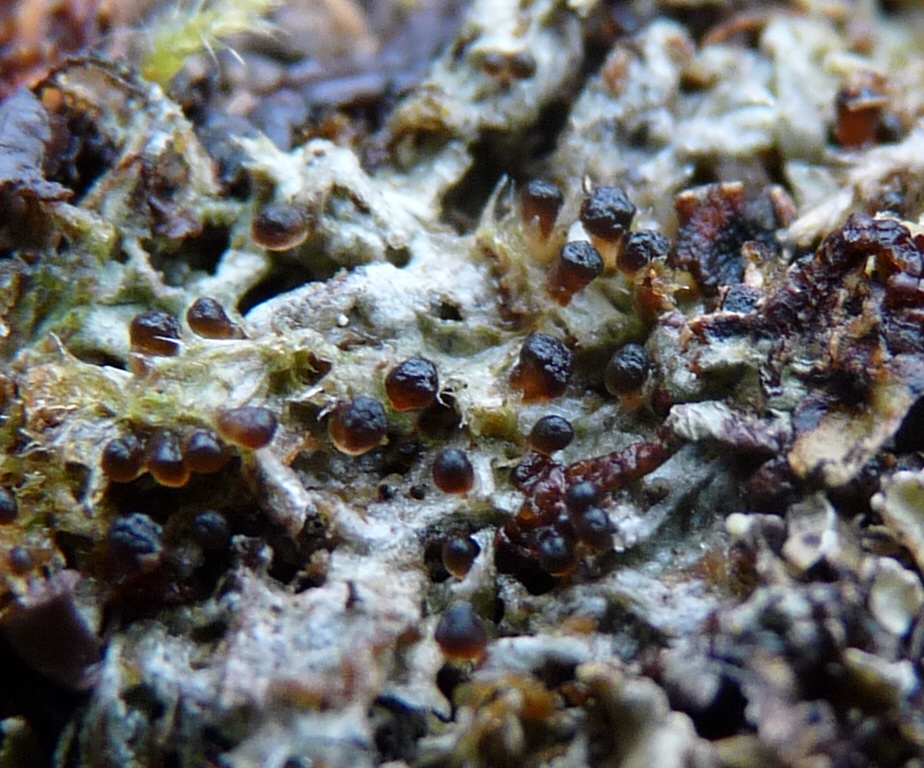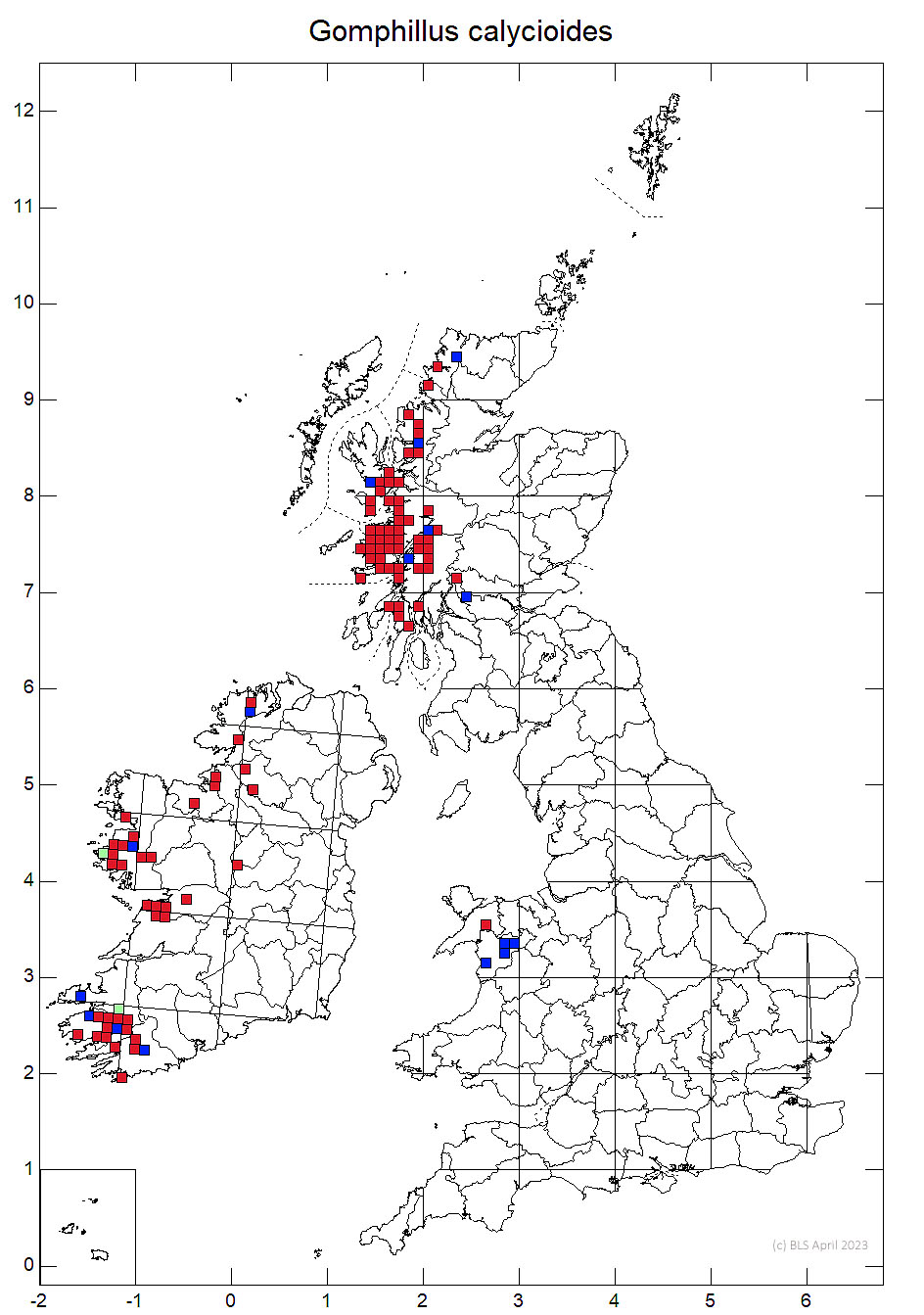Unless this lichen is fertile it is very difficult to locate. It grows over liverwort and moss leaves on trunks, branches and rocks in humid ravines and in woodlands as a translucent grey to greenish grey film. When fertile it’s unusual spherical to top shaped brown to brown-black fruits on a short furrowed stalk readily mark it out from other lichens. Under the microscope the very long thin spores (up to 200 microns long by 2 microns wide) and eight per ascus are also characteristic.

Photo: R G Woods
It overgrows or may be parasitic on moss and liverwort leaves on tree trunks, branches and on boulders and rarely on the ground in very humid places such as beside streams and lakes.
Very scattered and with few Welsh records, all probably from within the Snowdonia National Park. The only localised record traced is of Peter James who found it on an old oak near the stream at Benglog, NE of Dolgellau in 1960. (Lichenologist 1:273). Pentecost (1987) records it from SH 61, 82, 83 and 93. When not fertile it is easily overlooked but should be sought in humid ravines. It is not known from England. In Scotland it is most frequent in the Western Highlands and in Ireland is confined to the west coast. Elsewhere it occurs along the West Atlantic seaboard of Europe, in Macronesia, North and South America and Hawaii.
Little is known of its biology or the size of its disjunct Welsh population that is at the southern edge of its British distribution. It may be sensitive to acidic atmospheric pollutants so confining it to some of the least polluted sites in Wales, though these sites may also be some of the most humid. Any tree felling that opens up the canopy could threaten this species as could the dense shade created by ivy, holly, rhododendron if allowed to grow unchecked.
Because of its relatively widespread occurrence in Western Scotland it is considered to be Near Threatened in Britain as a whole, whilst in Wales it should probably be considered to be Critically Endangered, though may have been overlooked, particularly if sterile.
British populations are considered to be of internatiopnal
Pentecost, A (1987). The lichen flora of Gwynydd. Lichenologist 19:1-166.
- Log in to post comments

